Top 22 Hummingbird-Attracting Plants: Annuals & Perennials That Keep Your Garden Buzzing
- NeedmoreFarms
- Jun 17
- 6 min read

Hummingbirds are more than just delightful backyard visitors—they're also important
pollinators. As they dart from flower to flower sipping nectar, they transfer pollen along the way, helping plants reproduce and supporting biodiversity in your garden. These tiny, fast-moving birds are especially drawn to tube-shaped blooms in bright colors like red, orange, and pink, which are perfectly suited to their long beaks and tongues.
Whether you're designing a pollinator-friendly landscape or simply adding a splash of color to your containers, planting flowers that attract hummingbirds brings energy, motion, and ecological benefit to your space. In this guide, we’re sharing our top 22 hummingbird-attracting plants—split into easy-to-grow annuals and hardy perennials—along with growing tips, companion ideas, and why hummingbirds can’t resist them.
Annuals That Hummingbirds Love
Annuals are perfect for adding instant color and continuous blooms throughout the season. Most are fast-growing, easy to care for, and produce nectar-rich flowers hummingbirds can’t resist.

Zinnias are a garden staple for a reason. These bright, cheerful blooms thrive in full sun and
well-drained soil. They're low maintenance, bloom nonstop from summer to frost, and come in a rainbow of colors that hummingbirds love. Zinnias pair well with other sun-loving annuals like marigolds and cosmos.

Cuphea, also known as cigar plant, is a lesser-known annual with serious hummingbird appeal. Its red-orange tubular flowers are just the right shape and size for hummingbird beaks. Cuphea thrives in full sun to part shade and does especially well in containers, making it a great choice for patios or balconies.
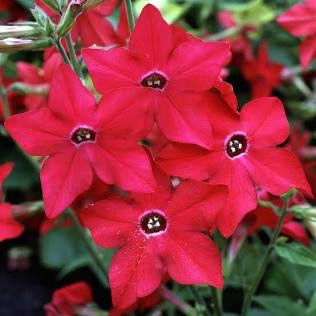
Nicotiana, or flowering tobacco, offers fragrant, tube-shaped blooms that open in the late afternoon and evening, making it ideal for nighttime pollinators too. It grows best in full sun to part shade with rich, well-drained soil. Nicotiana blends beautifully with petunias and adds a soft, cottage-garden look.

Lantana is a powerhouse pollinator plant that performs exceptionally well in heat and drought. Though often grown as an annual, lantana is actually a perennial in USDA zones 8 and up. It needs full sun and well-drained soil and will bloom continuously with little effort. Hummingbirds are drawn to its vibrant clusters of tiny tubular flowers, especially in red, orange, and yellow hues.
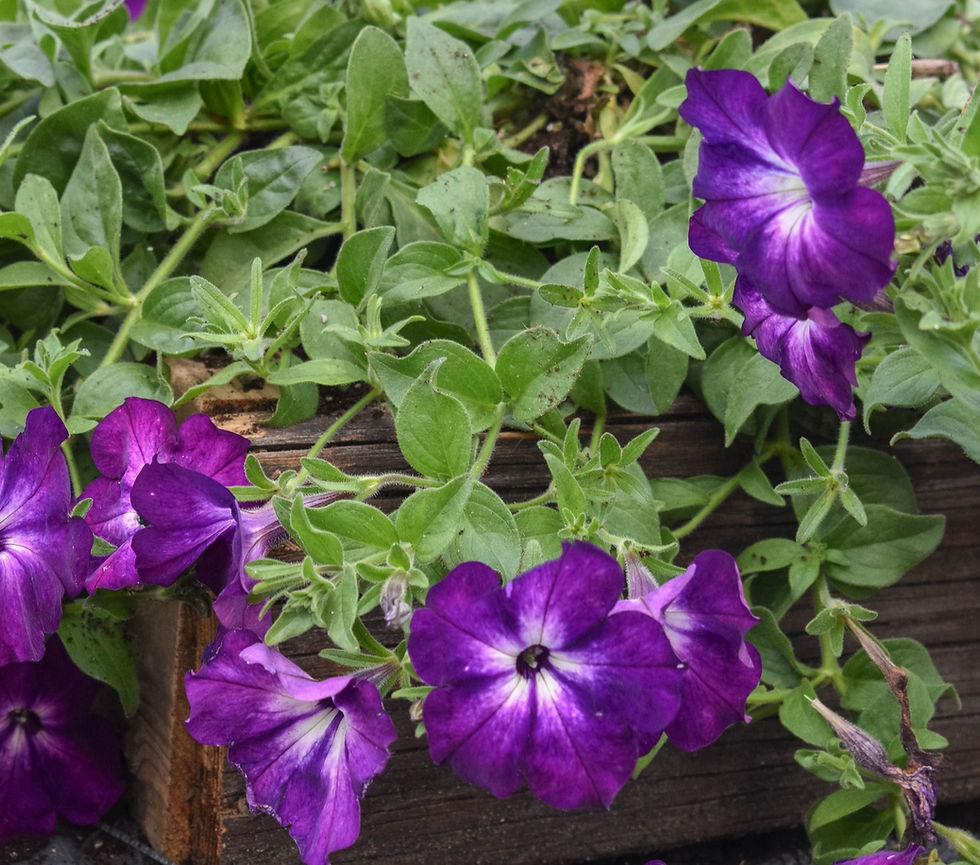
Petunias are among the easiest and most versatile annuals you can grow. Their wide trumpet-shaped flowers attract hummingbirds with ease, especially the red and pink varieties. They thrive in full sun and do best in hanging baskets, containers, or as border plants. Pair them with million bells for a cascade of color and nectar.

Million Bells (Calibrachoa) resemble mini petunias and produce an abundance of small, tube-
like blooms that hummingbirds love. These low-maintenance plants perform best in full sun to light shade with well-drained, slightly acidic soil. They’re perfect for window boxes, hanging baskets, or spilling over the edges of planters.
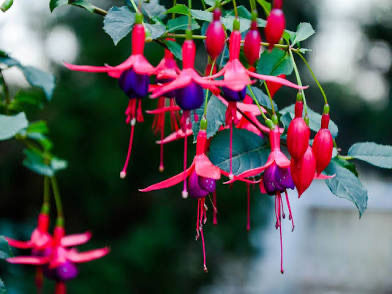
Fuchsia offers a dramatic flair with its drooping, jewel-toned flowers. These blooms are perfect for hummingbirds, who can hover and sip from below. Fuchsias prefer part shade and consistently moist, rich soil. They shine in hanging baskets, especially when paired with shade-loving companions like coleus or ferns.

Sunflowers, particularly the dwarf or branching varieties, can also draw in hummingbirds—though not for their nectar. These tall blooms attract small insects, a valuable protein source for hummingbirds. Grow them in full sun with fertile, well-drained soil, and pair with zinnias or cosmos for a pollinator-friendly mix.
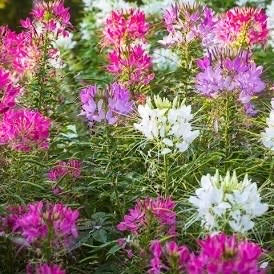
Cleome, or spider flower, is a tall, architectural annual with airy clusters of blooms. Its nectar-rich flowers are a favorite among hummingbirds, and the plant thrives in full sun and average soil. Cleome is a great backdrop plant, pairing well with sunflowers and other bold annuals.
Perennials That Hummingbirds Return to Every Year
Perennials are a great investment for a hummingbird garden. These plants come back each year, require less maintenance over time, and provide a reliable source of nectar.
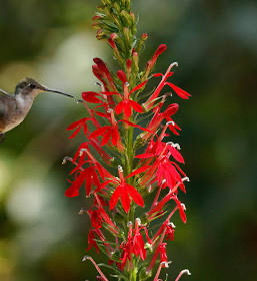
Cardinal flower (Lobelia cardinalis) is a standout for hummingbird lovers. With vivid red, tube-like blooms and a vertical growth habit, it’s tailor-made for their feeding style. It grows best in moist, rich soil and can tolerate part shade to full sun. It’s especially striking near water features or rain gardens and pairs beautifully with ferns and Joe Pye weed.

Salvia, especially varieties like Hot Lips and Black and Bloom, are absolute hummingbird magnets. These long-blooming perennials thrive in full sun and well-drained soil. Their upright spikes are covered in nectar-rich, tubular flowers in bold colors. They’re drought-tolerant once established and blend well with coneflowers and agastache.
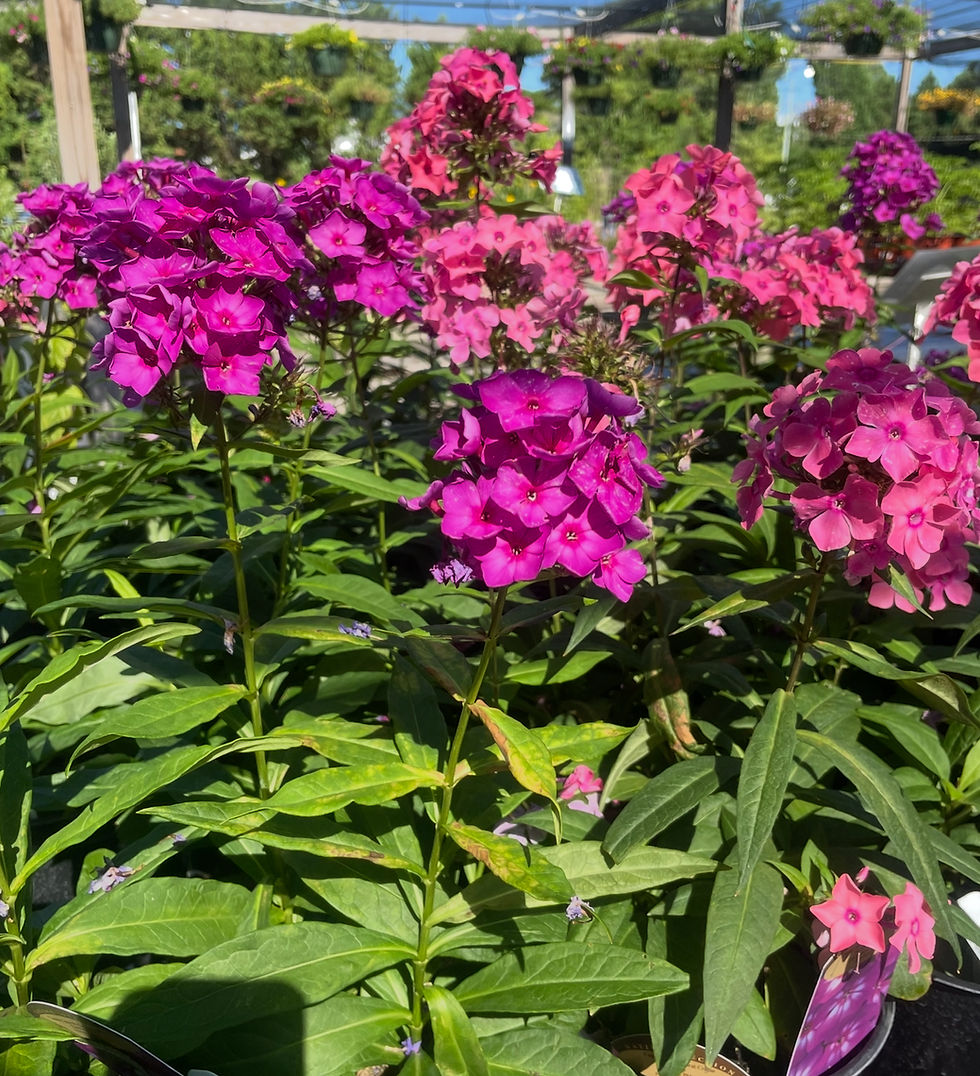
Phlox, particularly garden phlox, offers dense clusters of blooms that attract hummingbirds
all summer long. It grows best in full sun to part shade and moist, fertile soil. Phlox adds height and fragrance to the garden and works well with bee balm, echinacea, and delphinium.

Coral honeysuckle (Lonicera sempervirens) is a native vine with clusters of reddish-orange, tubular blooms that hummingbirds adore. It’s a non-invasive alternative to the aggressive Japanese honeysuckle and does well in full sun and well-drained soil. Grow it on fences or trellises near other hummingbird favorites like salvia and penstemon.

Delphinium produces tall spires of richly colored flowers that add drama to any border. Though they need a bit of care—rich soil, regular watering, and staking—they’re worth the effort for their bold presence and hummingbird appeal. Plant them in full sun alongside foxglove and lupine for a vertical, nectar-packed garden.
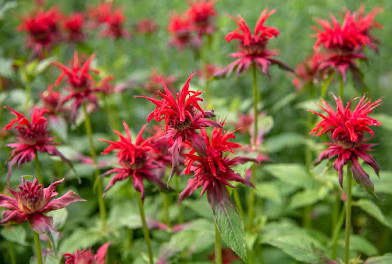
Bee balm (Monarda) is one of the most beloved native perennials for pollinators. Its shaggy, bright red or pink blooms are loaded with nectar and bloom mid- to late summer. Bee balm likes full sun and moist, well-drained soil, and it spreads easily, making it perfect for pollinator patches or cottage gardens.
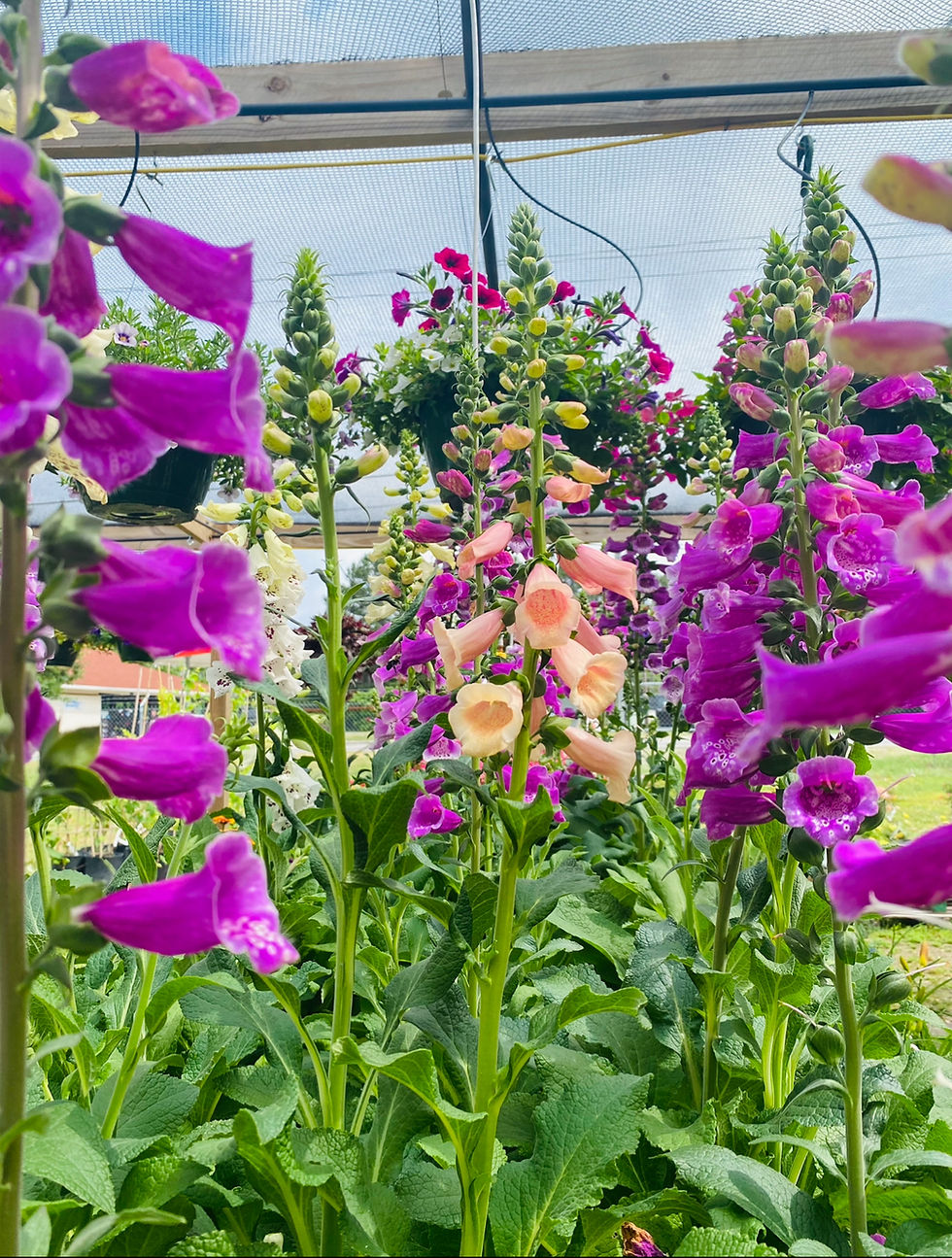
Foxglove adds elegance and height with its tall spires of bell-shaped, tubular flowers. A biennial or short-lived perennial, it reseeds readily and performs best in part shade and rich, well-drained soil. Its dramatic blooms attract hummingbirds while adding a woodland vibe when planted with hostas or ferns.

Lupine is a cool-season perennial with bold, spiky blooms that hummingbirds find irresistible. It thrives in well-drained, slightly acidic soil in full sun to part shade. Lupines pair well with daisies, delphiniums, and ornamental grasses and are excellent for adding texture and structure to borders.
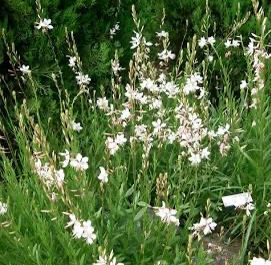
Gaura, sometimes called whirling butterflies, offers delicate, wispy blooms that sway in the breeze. It grows best in full sun and dry, well-drained soil. Though not tubular, its long blooming season and nectar availability make it a favorite stop for hummingbirds. Use it to soften the edges of garden beds alongside catmint and coneflowers.

Agastache, or hummingbird mint, lives up to its name. With spiky, tube-like blooms in sunset shades and a light minty fragrance, it's a must-have for a hummingbird garden. It prefers full sun, well-drained soil, and thrives in drought conditions. Combine it with yarrow, Russian sage, or catmint for a tough, pollinator-friendly border.
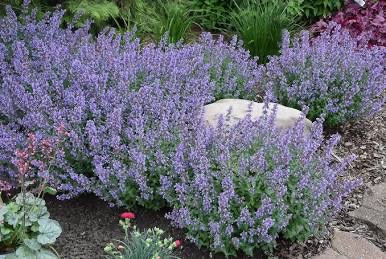
Catmint (Nepeta) is another reliable perennial with a long blooming season and soft lavender-blue spikes. While more commonly associated with bees, its tubular flowers attract hummingbirds too. It’s extremely easy to grow in full sun and well-drained soil, and pairs nicely with coneflowers, salvia, and roses.
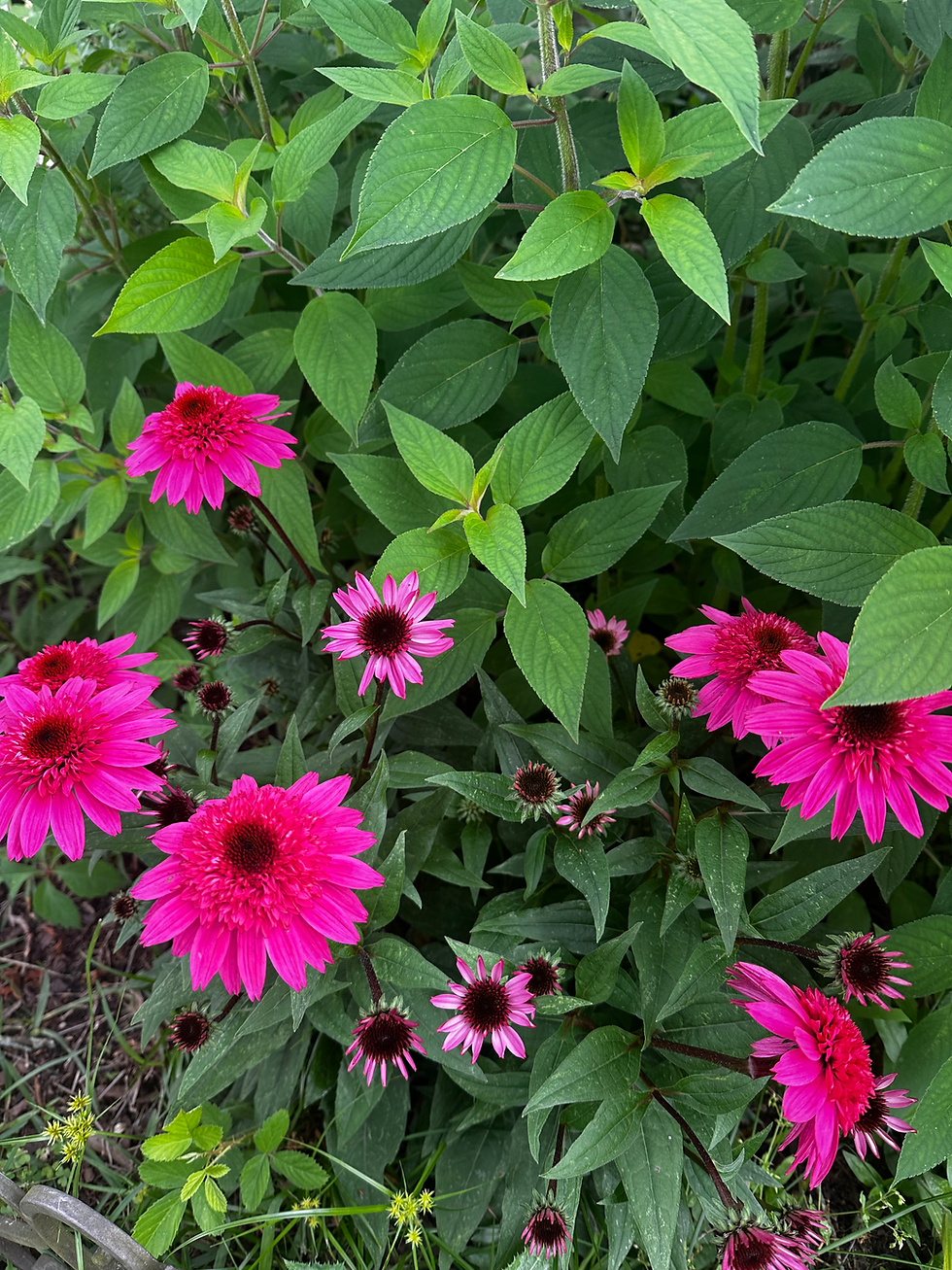
Coneflowers (Echinacea) are sturdy, sun-loving perennials that anchor pollinator gardens. Though their blooms are not perfectly tubular, their central cones attract insects that hummingbirds feed on. They grow well in poor to average soil, are drought-tolerant once established, and work beautifully with black-eyed Susans and bee balm.

Penstemon, also known as beardtongue, is a must-have for any hummingbird-friendly garden. Its upright spikes are covered in tubular flowers that come in shades of red, pink, purple, and white—shapes and colors that hummingbirds naturally gravitate toward. Penstemon thrives in full sun and prefers well-drained, sandy or rocky soil, making it ideal for xeriscapes or low-water gardens. It’s hardy in USDA zones 4–9 and blooms from late spring into summer. Not only is it drought-tolerant once established, but it's also a favorite for pollinators of all kinds. Plant it alongside salvia, catmint, or yarrow for a colorful, low-maintenance border that hums with life.
Tips for a Hummingbird-Friendly Garden
To keep hummingbirds coming back, plant a mix of annuals and perennials that bloom from early spring to late fall. Group plants with similar sun and soil needs, and aim for continuous blooms throughout the season. Avoid pesticides, provide a clean water source like a shallow fountain or mister, and add a few perches so hummingbirds can rest between feedings.
By mixing vibrant, tubular flowers with thoughtful design, you’ll create a sanctuary that hummingbirds—and you—will enjoy all season long. Looking to get started? Check out our curated plant collections, feeders, and DIY garden ideas to bring your hummingbird haven to life.




Comments